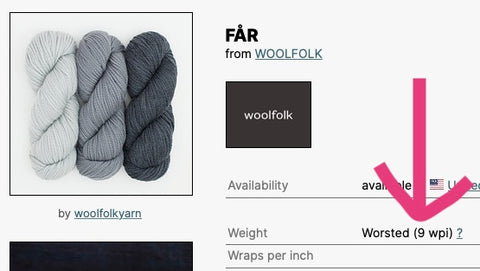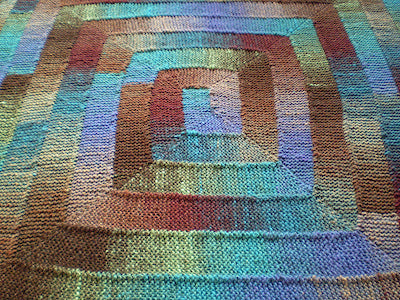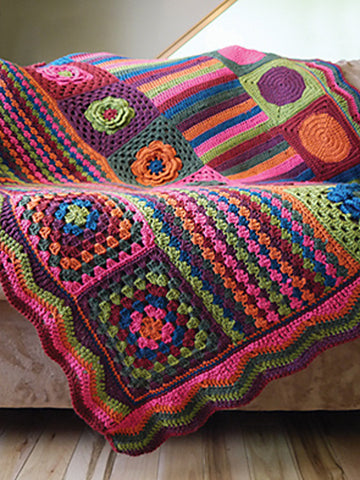Most of us yarn-enthusiasts have at least a small (okay, mine is ridiculously embarrassingly enormous) yarn stash tucked away somewhere. All those treasured little leftovers from finished projects, single beautiful skeins we just couldn't leave a yarn shop without, half-finished projects we can't even remember what started them for, yarns that arrived on our doorstep a few days after online shopping at 3 am and what the heck was I thinking?! It's okay, the first step is admitting you have a problem, right?
I really don't think it is a problem, honestly, as long as you manage it properly. That's what I tell my family and I'm sticking to it. We're here today to offer you a few tools to help sort, identify, and ultimately use up that stash so you can feel good about adding to it again. (Disclaimer: Please note that everything I am going to tell you about here are things I do practice, just not consistently. I have to go through this whole process a few times a year. Do as I say, not as I do etc. etc.)
When I am digging through the stash trying to find that marble-sized ball of perfect orange fingering weight that I know is in there somewhere and can't find it....that's when I usually lose my cool and know it's time for a sort and clean.
I start with unfinished project assessment: am I really ever going to finish this Wookie hat I started for my now 20 year-old son when he was 4? No, no I am not. That's my first step.....giving myself permission to abandon ship on things I will never finish. I unravel them, package the yarn in a ziplock bag with the labels in it so I know what the yarn is, and move on to the next unfinished malingerer. Before I know it, I have all kinds of slightly used yarn ready and waiting to be repurposed. It feels so good to let those things go knowing they will likely be used in a different way now. How exciting!
A note on re-using yarn: depending on how long the yarn has been in a knitted or crocheted state, it may be kinky when it is unraveled. That's ok, you can still use it again. Many people like to remove the kinks before they re-use. To do that, wind it around a sofa pillow or have a friend hold out their arms for you to wrap it around. Do this in manageable chunks (skein-sized, not the entire project), securing the hanks by tying little bits around it periodically to hold it together

Once it is safely wound, soak it in a sink full of cool water until it is saturated. Carefully remove it from the bath and lay it flat on a towel. Lay another towel on top and press the excess water out of it. Finally, hang it up to dry and twist it back up into a skein once fully dry. Voila! Nearly-new yarn!
You don't have to un-kink your yarn if you don't want to, just be aware that when you work with it kinked and THEN block it, your finished fabric is probably going to grow bigger when the kinks get worked out in the blocking process.
Next, I begin sorting the yarn by weight. This is the classification I find most useful for myself; you might have a different priority and that's great too. When I am thinking about starting a project, yarn weight is usually the first thing I need to know so that's how I sort. Here's where it can get tricky.....you might not have a handy label or other way to identify your stash yarn. Most of the time when I am finished with something, I just toss the leftover in the stash chasm and hope that my memory will serve me later. News flash: well, I'm sure you know the news flash. The good news is, most of us have the perfect tool to help us already laying around the house.

See, it even says "Life Guard" right on it!
Wraps Per Inch, or WPI, is an invaluable method to learn to determine the thickness of un-marked yarn. Ravelry has this information on their website on any yarn page....

If you click on the little question mark next to the (9 wpi), a handy little chart will pop up that looks like this:

What this means to you: wrap your mystery yarn around a ruler without pulling it snug but also not too loosely. You want each wrap to just be touching the next. Now, just count and see how many times your yarn wraps around one inch on your ruler and refer to the chart. Mystery solved!
One last question that some have is related to determining the fiber content of their mystery yarn. While not completely foolproof, a burn-test can give you at least some basic information about your yarn. I shouldn't need to say this, but PLEASE BE VERY CAREFUL WHEN PLAYING WITH FLAME AND YARN AND YOUR FINGERS! To do this, snip an inch or so of your yarn and hold it with tweezers. Hold it over your sink or something fireproof, hold a flame to it, and observe what happens when you remove the flame. Wool or other animal fibers will probably turn to ash and extinguish almost immediately and smell like burning hair. If it is blended with something man-made like acrylic, a little melted-looking bead may also form along with the ash. A vegetable fiber yarn will also burn to ash but probably not as quickly, and smell more like burning grass. Anything synthetic (man-made or petroleum-based) is more likely to melt than to burn and will have a chemical or petroleum aroma. Again, this may not be the most accurate method, but it will at least give you an inkling.
Ready to take the dive? Here are a few fun patterns that are great for stash-busting....

Ten-Stitch Blanket (knitted) by Frankie Brown. You can use any weight yarn for it, and she has written it for all different shapes too, lots of fun!

Groovyghan by Tracy (me!). This is a super fun crochet and a great way to use up even one-yard lengths of yarn. Go crazy!

Marled Magic Shawl by Stephen West (or any of the Marled series by Westknits) Yarn of different weights can be held together, or you can use worsted weight by itself. Super fun!

The upcoming Destination Scarf class would be great too! This scarf is knitted in a tube, so you don't have to worry about too many ends to weave in if you use a bajillion colors....you don't have to weave in your ends AT ALL!
I hope you found some useful tools for stash management here. However you deal with your stash is the right way. It's yours, make the most of it and have fun!
Hit us up if you have any great ideas of your own or tell us what works for you and your stash, we'd love to learn from you!



4 comments
thank you for this, it was great info and made me feel better you guys are awesome
Hi Tracy!
This Stix Journal is helpful and hilarious!
Thank you for the tips and pattern ideas.
😊 Stanette
What a nice Journal! Good refresher for handling all those skeins and balls that move from one bin to another in the middle of the night….
This is a great post. I never understood the wraps per inch science—now it makes perfect sense!